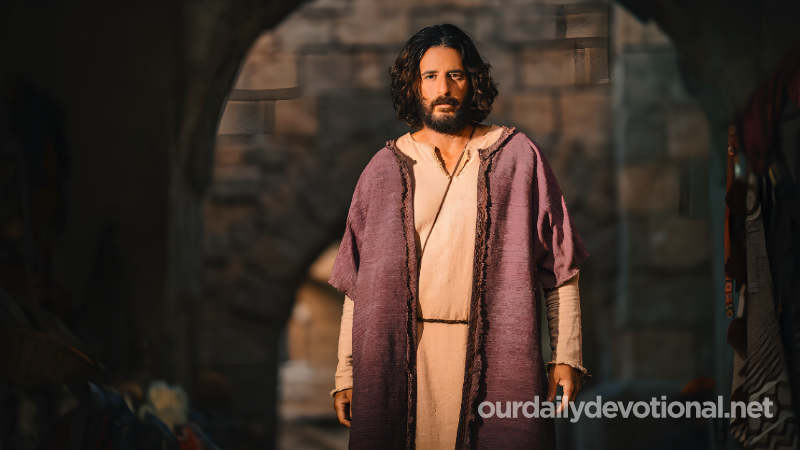It is the oldest of the epistles of the apostle Paul, who was with Silvanus (Silas) and Timothy when he addressed it to the church in Thessalonica.
Paul had founded this church in the course of his missionary journey. The Jews, irritated, expelled the apostle from Thessalonica; then he went from there to Berea, and then to Athens (see PAUL).
The epistle contains allusions to the incidents at Thessalonica (1 Thess. 2). He also states that Timothy was sent by Paul from Athens to Thessalonica to encourage persecuted Christians (1 Thes. 3:13). Timothy gave Paul news of their firmness. In Acts. 18:5 we are told that Silas and Timothy met the apostle at Corinth, from where he first wrote to the Thessalonians, probably in AD 50 or 51.
The allusions in the epistle to Paul's experiences in Thessalonica, the concern of the Thessalonians about their dead brothers, as well as the practical character of the epistle, confirm this date.
(A) Motivating circumstances of the epistle:
(1) Tendency of the Thessalonians to neglect daily work, possibly on the grounds that, if the Lord was coming soon, it was not worth performing the usual duties for subsistence. Weakness on the moral level.
(2) Perplexity about those who had died. The Thessalonians feared that they would no longer have a part in the glorious reign that Christ was going to establish at his coming.
(3) Problems in the exercise of spiritual gifts, particularly prophecy.
(B) Analysis of the epistle.
(1) The apostle pays tribute to the fervor, patience and influence of the Christians in Thessalonica (1 Thess. 1).
(2) He reminds them that he has acted with perfect righteousness towards them and that he has not been a burden to anyone. He praises their bravery in the midst of persecution (1 Thes. 2).
(3) Paul's joy in learning the good news that Timothy brings him from Thessalonica (1 Thess. 3).
(4) Particular instructions (1 Thes. 4:1-5:24):
(a) Necessity of purity (1 Thes. 4:3-8).
(b) Exhortation to brotherly love and work (1 Thes. 4:9-12).
(c) When the Lord comes, the already dead believers will be resurrected first; the living believers will then be transformed, and all together will be caught up to meet the Lord in the air (1 Thes. 4:13, 18; cf. 1 Cor. 15:51-53).
(d) Need to be vigilant and sober (1 Thes. 5:1-11).
(e) The apostle recommends respect for the brothers who lead the flock, doing good, the exercise of spiritual gifts, and the practice of all Christian virtues (1 Thes. 5:12-24).
(5) Farewell (1 Thes. 5:25-28). This epistle reveals in a remarkable way the problems faced by a church made up of recent converts, arising, for the most part, from paganism; It also shows the greatness and wisdom of the apostle. (See Rapture.)
2nd Epistle
(B) Origin. Paul wrote it in Corinth, like the first, and a few months after it, probably in the year 51. The apostle was again accompanied by Silvanus (Silas) and Timothy (2 Thes. 1:1). This letter is, especially, a warning against erroneous ideas regarding the Second Coming of the Lord (2 Thes. 2). Again, Paul recommends that they rebuke and point out the lazy (2 Thes. 3:6-12).
In the first epistle the relationship of the Second Coming with believers is explained; the second reveals what will happen to sinners (2 Thes. 1:5-10). Paul then pleads with the Thessalonians not to be carried away by thinking that “the day of the Lord has come” (2 Thes. 2:2).
In this regard, it should be noted the unfortunate and erroneous translation that the Reina-Valera has exhibited in this passage, including the 1960 revision, and which has been happily corrected in the 1977 revision. In effect, the erroneous translation, "do not let yourselves move easily... in the sense that the day of the Lord is near":
(A) does injustice to the Greek text, since what is encouraged here is to resist the erroneous teachings that "the day of the Lord has come." Such teachings distressed Christians, who therefore thought they were living in the days of divine retribution on earth (see TRIBULATION [GREAT]).
(B) It does injustice to the NT teaching of the imminence of the Lord's coming, which should be the real and constant hope of every generation of Christians. (cf. W. E. Vine: "Expository Dictionary of New Testament Words", Clíe, Terrassa, 1984, vol. 1, p. 32, under article APPROACH, NEAR, NEAR, b, 3, note [21).
It must be remembered, and Paul reminds the Thessalonians, that the Parousia must be preceded by the apostasy, predicted by the Lord himself (cf. Mt. 24:9-12) and by Paul (Acts 20:29, 30; Rom. 16:17-20; 2 Cor. 11:13-45; 1 Tim. 4:1), and by the manifestation of the Wicked One (2 Thes. 2:3, 4; Dan. 7:25; 11:36 ; 1 Jn. 2:18). (See ANTICHRIST.) The Lord will destroy him when he returns in glory. Paul reminds the Thessalonians that he already told them all these things when he was with them (2 Thes. 2:5).
The position that the eschatological vision of Second Thessalonians is incompatible with the First Epistle is baseless. For this it is assumed that, just as in the first the believer is exhorted to wait for the coming of the Lord with vigilance, because the day of the Lord will come suddenly, in the second a sequence of events is affirmed (cf. 2 Thes. 2:12 with 1 Thes. 5:1-11).
But there is no contradiction. It is evident that the rapture of believers (1 Thes. 4:17) precedes the coming of the Lord (see discussion of the various views in TRIBULATION [GREAT].) The encounter of believers with the Lord takes place in the air (1 Thes. 4:17).
When the Lord comes to judge, he does so accompanied by his saints (1 Thes. 3:13). Between the rapture of the saints in 1 Thes. 4:13-18 to meet the Lord in the air until the Second Coming of the Lord to earth is the interval in which apostasy and the man of sin are manifested (2 Thes. 2:1-12).
That is why Christians should not think that the day of the Lord had already arrived. This day will not take Christians by surprise (1 Thes. 4:8), but they will be with Christ on the day of his glorification (1 Thes. 4:9-10; 2 Thes. 1:10; 2:10). 13-17).
(b) Plan of Second Thessalonians.
(1) Thanksgiving for the integrity of the faith of these new converts. The Lord, at his Second Coming, will give everyone a just reward (2 Thes. 1:1-12).
(2) Exhortation not to be misled regarding the date of the Lord's coming to earth. Description of the apostasy and the man of sin that will precede the coming of the Lord (2 Thes. 2:1-12).
(3) Paul rejoices in the election and faithfulness of the Thessalonians (2 Thes. 2:13-17).
(4) Last exhortations: intercession; need to distance oneself from those who live disorderly; daily work; the authority of the apostle (2 Thes. 3). The apostle had put the Thessalonians on their guard (2 Thes. 2:2) against a letter purportedly from him; He adds, in conclusion, that all his letters are provided with his personal signature (2 Thes. 3:17).
It can be seen that from the origin of the Church, Paul's letters and his oral teachings had the same authority. His statements regarding apostasy and the man of sin have given rise to various interpretations.
However, from the very nature of the concept of apostasy it is evident that it will take place within professing Christianity; Its climax will be the appearance of a personal Antichrist, the man of sin. "He who now restrains him" (2 Thes. 2 7) in the masculine refers to a personal agency; in the V. 6, on the other hand, the article is neutral, which is therefore an impersonal agency.
However, it is evident that both verses 6 and 7 have a close relationship. It has been suggested that this impersonal retaining agency is civil power, human government, but it is a solution that is far from satisfactory. In reality, many human governments, rather than preventing this state of things, have prefigured it (cf. Nebuchadnezzar, Dan. 3; Darius, Dan. 6; the divine honors given to the Roman emperors, etc.). It is evident that it is:
(a) of the anti-corruption action of all believers on earth, who, while they are here, act as salt, preventing corruption from fully manifesting (cf. Mt. 5:13);
(b) by the residence of the Holy Spirit in them (cf. Jn. 14:16-17, etc.). This explains this double mention, impersonal (2 Thes. 2:6) and personal (2 Thes. 2:7); The retaining action is:
(i) that of the believing Church,
(ii) energized and directed in the witness of it by the Holy Spirit.
When the Church is caught up (1 Thes. 4:13-18) he will be “taken out of the way” (2 Thes. 2:8) that and He who prevents the manifestation of the Wicked One (v.8).
(C) Authenticity.
The external and internal tests are very strong.
The First Epistle is included in the Vetus Latina. It appears in the Muratori fragment. Irenaeus cites it, attributing it to Paul and designating it as the first epistle addressed to the church in Thessalonica.
Clement of Alexandria also quotes it and attributes it to Paul. Tertullian calls it the Epistle to the Thessalonians. «The internal evidence is equally compelling. Personal mentions are inexplicable if they are not from Pablo.
The differences with the account of Acts indicate the duality of authors, but cannot lead to doubting the authenticity of the epistle. Through her and through first-hand testimonies we can get to know what kind of man Paul was and what kind of letters he wrote »(Manley: «Nouveau Manuel de la Bible», p. 377).
Regarding the Second Epistle, it is mentioned by Marcion, the fragment of Muratori and Irenaeus; Furthermore, it seems that it had been known by Polycarp, Ignatius and Justin. It was already universally accepted in the year 200.
Meaning of THESSALONIANS (1st Epistle)
It is the oldest of the epistles of the apostle Paul, who was with Silvanus (Silas) and Timothy when he addressed it to the church in Thessalonica.







